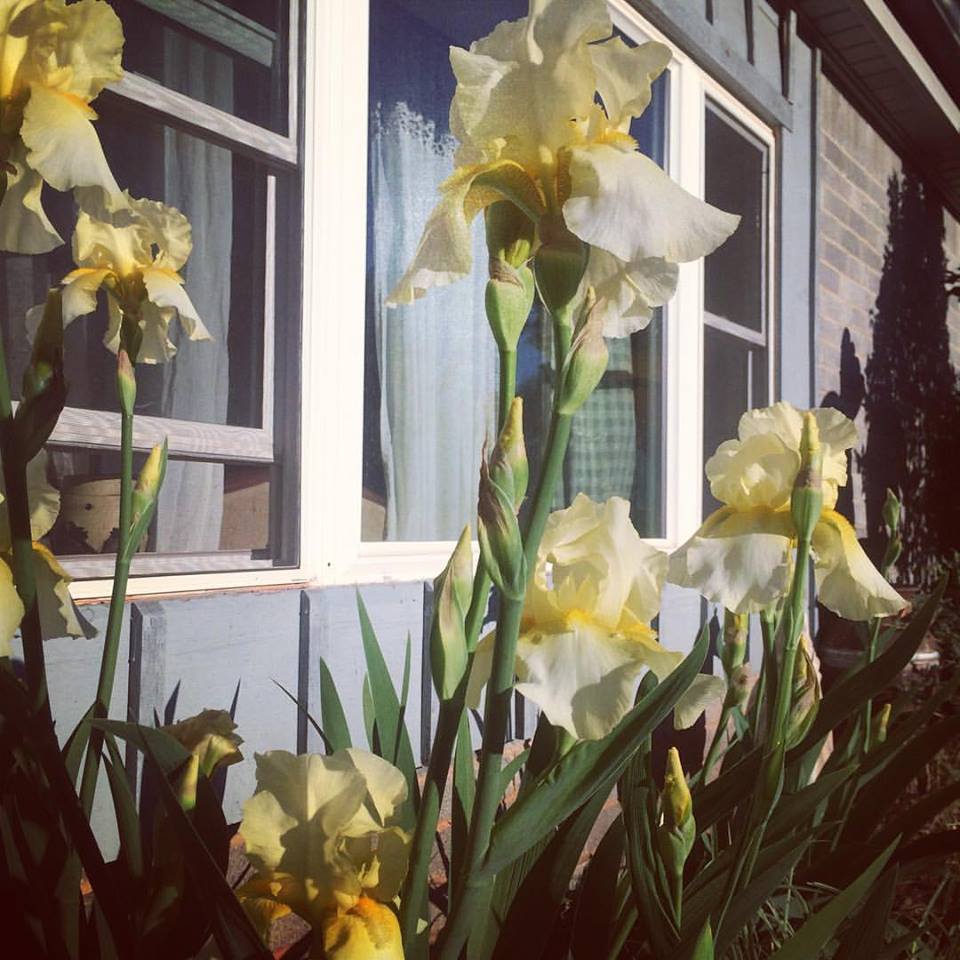Have you heard the legend of how the elegant iris survived a famine in Japan?
I am going to paraphrase it for you without bothering to fact check, because the best legends possess more magic than facts, anyway. xoxo
Once upon a time in feudal Japan, either a century or five or nine ago, the people were starving. The land was stricken hard by famine. So little was growing, and yet the population was exploding so greatly, that the government made a decree: In order to maximize their limited farmland it was ordered that only edible plants could be cultivated. The island nation could afford to waste no fertile soil on ornamentals like flowers.
But the Japanese people loved their flowers, their irises especially. Irises were heritage plants, like they are for us now: Legacies handed down from one generation to the next with great care. Beautiful, fragrant, voluptuous tissue blooms growing year after year in the toughest conditions. The villagers could look at their irises and glimpse decades and centuries of familial connection, a vital life force in their culture. To many villagers, growing irises seemed as important as growing food.
So they found a way.
The people gently unearthed their coveted rhizomes from garden spaces that would then be dedicated to growing food exclusively. They secreted the woody treasures up to the thatched roofs of their homes. In little pockets of earth out of view of the soldiers and farm overseers, they maintained their iris legacies.
Food grew below, in the open, and the famine eventually passed. The land healed. And irises grew above, in secret, and their legacies remained in tact. The people healed.

As I sit here typing this story a very old cut-glass vase faces me, filled with yellow and white iris blooms. I brought them inside yesterday, and they have been perfuming the downstairs ever since. Like most people, I grow irises that were gifts. Some are from my Mom who got them three decades ago from my Dad’s grandmother, whose parents brought them over from Germany. Some are from my wonderful gardening friend Kevin. A few are wild transplants, but not many. All of them are gorgeous and strong. Resilient. Colorful in different ways but all heady with that unmistakable scent.
Plants come and go in our lives and in our culture for a variety of reasons. Lots of people are quick to dismiss a loss or even to claim “brown thumb” when growing conditions are tough, as they frequently are here in my home state. Okay, gardening isn’t for everyone. But beauty takes many shapes and can come and go in our lives for a variety of reasons. The next time you are faced with losing something beautiful and precious that perhaps you could salvage, take heart. Consider the faith and determination of the Japanese people when they were faced with losing something dear to them. The evaluated their resources, re-purposed everything, and found a way. They made a way. They valued beauty as much as sustenance and then quietly, without fanfare or violence or a noisy protest, fulfilled the desires of their own hearts. And it was plenty enough.
This story speaks to me on many other levels too. If you were here drinking coffee with me we could talk it over for a few hours! But we both have stuff to do, right? I’ll leave you to it and get on my way as well.
Seek beauty, friends. It is a meaningful gift. Live with beauty. Aim for legacy. Seek it. Value it. Make room for all of it in your life, even if you have to secret things away to your thatched roof for a season. It can heal you.
Happy springtime wishes from Oklahoma
XOXOXO